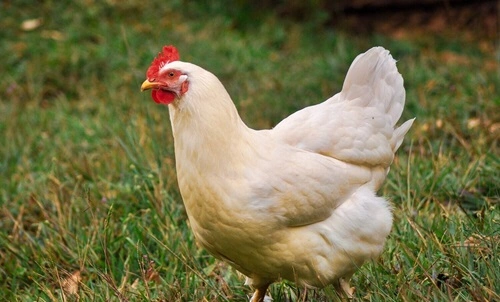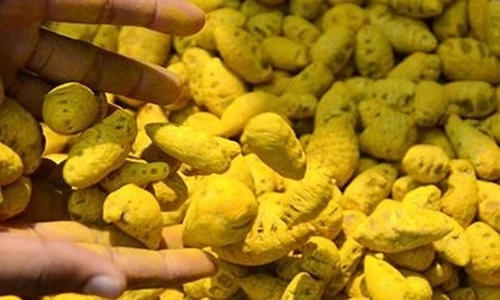Poultry farming plays a significant role in the agricultural economy of India, providing income, employment, and nutritional security. Chickens, particularly hens, are reared for their meat (broilers) and egg production (layers). With increasing demand for protein-rich food, both egg and poultry meat consumption have grown exponentially in India.
India has a variety of hen breeds that can be categorized into:
- Desi/Indigenous Breeds – Traditional breeds suited for free-range farming.
- Commercial Breeds – Hybrid and improved varieties for large-scale commercial poultry farming.
Hens are cultivated across Tamil Nadu, Kerala, Andhra Pradesh, Telangana, Maharashtra, Haryana, Punjab, and West Bengal. This article highlights more than 10 top hen varieties in India, covering both desi and commercial breeds, their characteristics, uses, and regions of cultivation.

1. Aseel
Aseel is one of the oldest and most popular indigenous hen breeds in India.
- Region: Andhra Pradesh, Tamil Nadu, Uttar Pradesh
- Appearance: Strong body, long legs, and a compact, upright stance
- Weight: 3–4 kg (males), 2–2.5 kg (females)
- Egg Production: 40–50 eggs/year
- Characteristics:
- Known for its excellent meat quality and fighting abilities
- Highly resilient to diseases and extreme climatic conditions
- Uses: Meat production, traditional poultry farming
2. Kadaknath
Kadaknath is a well-known desi breed famous for its black meat, which is highly nutritious.
- Region: Madhya Pradesh, Chhattisgarh, Rajasthan
- Appearance: Completely black body, skin, and internal organs
- Weight: 1.5–2 kg (adults)
- Egg Production: 80–100 eggs/year
- Characteristics:
- Rich in iron, protein, and low cholesterol content
- Highly disease-resistant and suited for free-range farming
- Uses: Premium meat production, traditional medicine
3. Giriraja
Giriraja is an improved breed developed for dual-purpose farming (eggs and meat).
- Region: Karnataka, Tamil Nadu, Kerala
- Appearance: Medium-sized with multi-colored feathers
- Weight: 2–3 kg (adults)
- Egg Production: 150–180 eggs/year
- Characteristics:
- High egg-laying capacity under backyard conditions
- Tolerant to diseases and adaptable to rural environments
- Uses: Meat and egg production
4. Vanaraja
Vanaraja is a popular dual-purpose hen variety suited for rural poultry farming.
- Region: Telangana, Andhra Pradesh, Odisha
- Appearance: Large birds with attractive feather colors
- Weight: 2.5–3.5 kg (males), 2–2.5 kg (females)
- Egg Production: 120–150 eggs/year
- Characteristics:
- Thrives in free-range and backyard systems
- High-quality meat and moderate egg production
- Uses: Meat and egg production
5. Rhode Island Red (RIR)
RIR is one of the most popular commercial layer breeds in India.
- Region: Tamil Nadu, Maharashtra, Haryana
- Appearance: Reddish-brown feathers and a compact body
- Weight: 2–3 kg (adults)
- Egg Production: 200–250 eggs/year
- Characteristics:
- High egg yield with strong shell quality
- Disease-resistant and adaptable to diverse climates
- Uses: Egg production
6. White Leghorn
White Leghorn is a dominant layer breed used for commercial egg production.
- Region: All major poultry-producing states
- Appearance: Pure white feathers, small body frame
- Weight: 1.5–2 kg (adults)
- Egg Production: 280–320 eggs/year
- Characteristics:
- Produces high numbers of white-shelled eggs
- Low feed consumption with high efficiency
- Uses: Commercial egg production
7. Gramapriya
Gramapriya is a low-input, dual-purpose hen variety developed for rural areas.
- Region: Tamil Nadu, Karnataka, Andhra Pradesh
- Appearance: Multi-colored feathers, medium-sized body
- Weight: 2–2.5 kg
- Egg Production: 150–180 eggs/year
- Characteristics:
- Thrives in free-range systems
- Low cost of production with good productivity
- Uses: Meat and egg production
8. Nicobari
Nicobari hens are indigenous breeds native to the Nicobar Islands.
- Region: Andaman & Nicobar Islands
- Appearance: Small birds with black, brown, or white feathers
- Weight: 1.5–2 kg
- Egg Production: 120–140 eggs/year
- Characteristics:
- Highly disease-resistant and adaptable to coastal climates
- Good egg production under free-range systems
- Uses: Egg production
9. Cari Shyama
Cari Shyama is an improved version of Kadaknath, developed by CARI (Central Avian Research Institute).
- Region: Uttar Pradesh, Madhya Pradesh, Chhattisgarh
- Appearance: Black feathers and body, similar to Kadaknath
- Weight: 1.5–2 kg
- Egg Production: 80–100 eggs/year
- Characteristics:
- High meat quality with rich nutritional content
- Ideal for backyard poultry farming
- Uses: Meat and egg production
10. Cobb 500
Cobb 500 is a commercial broiler breed grown for rapid meat production.
- Region: Pan-India, especially commercial farms
- Appearance: White feathers, broad body
- Weight: 2–2.5 kg (at 6–8 weeks)
- Egg Production: Not used for eggs (broilers only)
- Characteristics:
- Fast growth rate with excellent meat quality
- Efficient feed-to-meat conversion ratio
- Uses: Commercial meat production
FAQs
Q1: Which is the best hen breed for backyard farming in India?
A: Giriraja, Vanaraja, Gramapriya, and Aseel are ideal for backyard farming due to their adaptability and dual-purpose use.
Q2: Which hen variety is known for its black meat?
A: Kadaknath and Cari Shyama are known for their black meat, rich in nutrients like iron and protein.
Q3: Which hen variety is best for egg production in India?
A: White Leghorn and Rhode Island Red (RIR) are the most productive commercial layer breeds.
Q4: Which hen variety is suited for meat production?
A: Cobb 500 and Vanaraja are excellent choices for commercial meat production.
Q5: What is the most disease-resistant desi hen breed?
A: Kadaknath, Nicobari, and Aseel are highly disease-resistant and well-suited for harsh climates.
Conclusion
India’s poultry farming sector has benefited from the adoption of both indigenous breeds like Aseel and Kadaknath and commercial hybrids like White Leghorn, RIR, and Cobb 500. Selecting the right variety based on farming goals—be it for meat, eggs, or dual-purpose use—ensures profitability and sustainability for Indian farmers.

